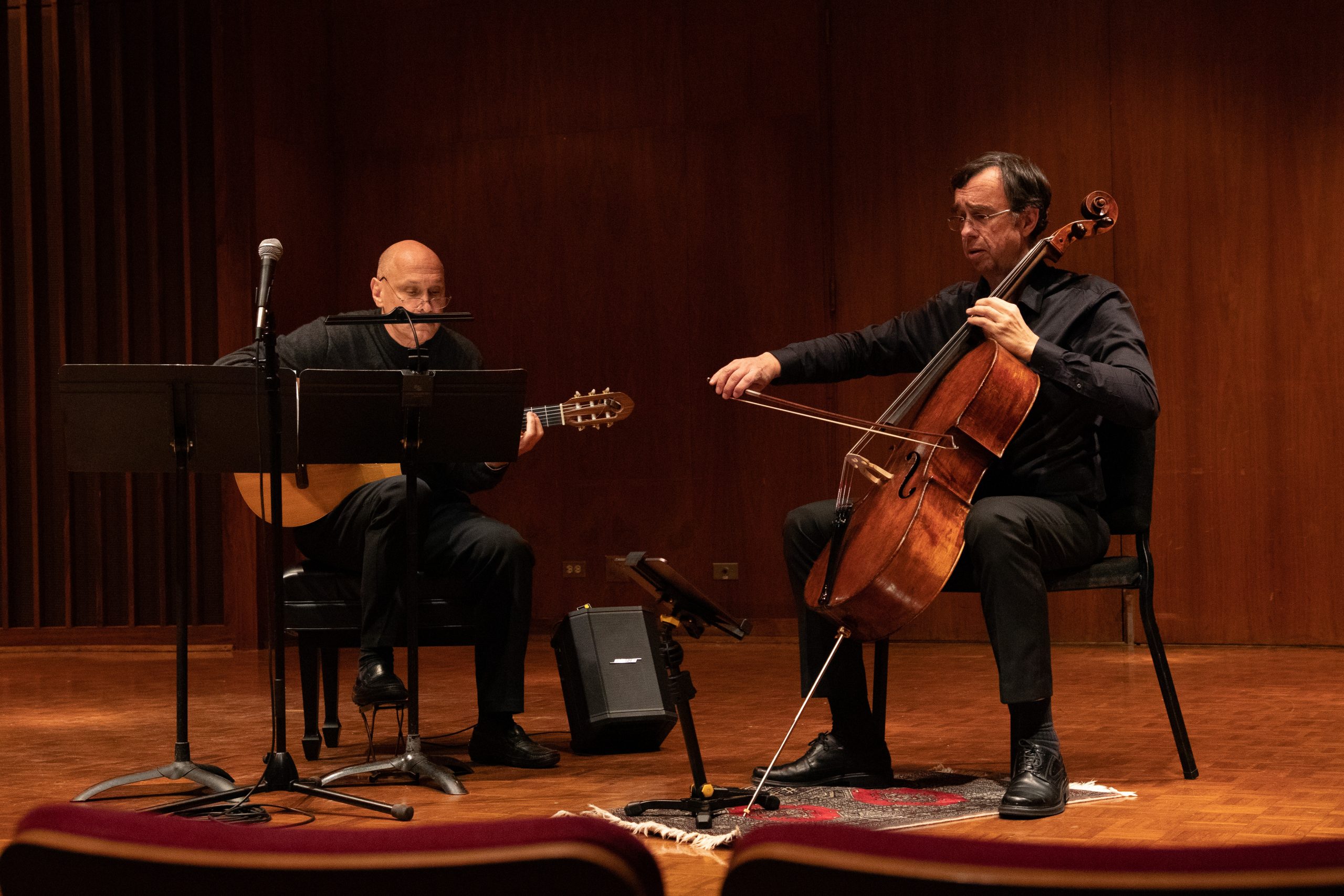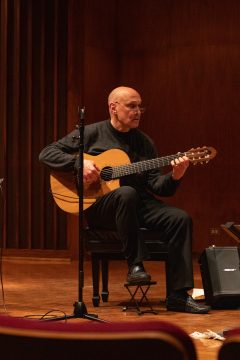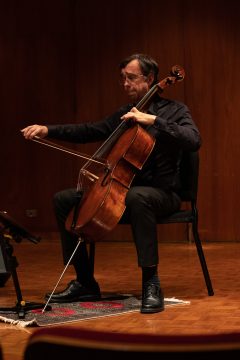The Arpeggione Duo, consisting of cellist Thomas Schönberg of Sweden and guitarist Chris Kachian of Wisconsin, performed a program titled “Iberia and the New World” in Harper Hall on Sunday, April 10. Their selection of works represented a variety of Latin and Iberian countries and ranged in period from the 19th century to the contemporary, transporting the audience on a musical journey through time and space.
The duo arranged the majority of the pieces for cello and guitar themselves, creating new interpretations of often well-known pieces within their nations of origin, and blurring the lines between classical and folkloric styles. As Kachian put it, “Virtually everything you’re hearing in this concert has never been done this way before.”
In addition to a recital, the musicians chose to use their performance as an educational opportunity. Kachian’s sense of humor and contagious enthusiasm made his informative introductions to each set of pieces enjoyable to listen to as well as contextually helpful.

Beginning in Spain, Schönberg and Kachian performed a set of classical works, including two flamenco dances by Joaquin Turina, which featured the characteristic flair and vigor of the genre, as well as almost conversational exchanges between the cello and guitar parts.
They also included “Capricho Arabe” by Francisco Tarrega, a piece originally written for solo guitar, which evoked for me the feeling of walking along a street at night with friends, lit only by streetlights. The duo’s arrangement kept the original guitar part, opening with a sparse and mysterious melody before falling into a steadier rhythm. The added cello part in this arrangement contributed to the piece’s sense of peaceful companionship by emphasizing downbeats in some places and running parallel to the guitar’s melody in others.
Next, they performed “La Vita Breve” by Manuel De Falla, which showcased a fiery cello melody and was infused with energy throughout — the musicians’ strumming and bowing hands flew into the air as the piece ended.
My personal favorite from their Spanish pieces was a turbulent work by Enrique Granados called “Intermedio.” After a brief and intense introduction, the piece moved to a melancholic, cantabile cello melody against a meditative guitar part, transitioned to a zealous section in which the guitar rumbled with energy, then finished by returning to its earlier, placid character.
From Spain, the duo took us to Portugal, where we heard works by Carlos Paredes, a 20th century composer who wrote in the fado genre, which Kachian informed us is “the national style” of Portugal, comparable in importance to flamenco in Spain, and which he characterized as “a deeply sentimental kind of music.”
The first of these pieces featured a sorrowful melody which was traded between the cello and guitar throughout, while the second started off much more lively until the cello took on a wistful quality.
Next came the music of Venezuelan composers Billo Frometa and Antonio Lauro. The three pieces by Frometa were all love songs, the first two of which were in the Rumba genre, a dance style popular in Venezuela during the mid-20th century but which is originally Afro-Cuban. The third was Bossa Novan, a rhythmic dance style that emerged in Brazil in the mid-20th century and quickly spread across South America and the globe. These pieces ranged in mood and style from jazzy to playful to more laid back. Lauro is known for his waltzes, of which the duo performed a lighthearted and romantic set of three.
Moving on to Brazil, the duo maintained the theme of sentimental love songs with Heitor Villa-Lobos’s “Modinha,” which maintained a steady and tranquil guitar rhythm that Kachian described as “proto-Bossa.” Their next piece, “Bachianas Brasileiras,” incorporated stylistic elements of both Brazilian music and that of J.S. Bach and possesses the fascinating fact of having been originally written for soprano accompanied by eight cellos! In “Cisne Negro,” or “Black Swan,” the instruments collaboratively created a scene in which the cello portrayed the swan while the guitar created a watery texture.
Schönberg and Kachian concluded their program with a suite of pieces by contemporary Argentinian composer Maximo Diego Pujol. The five sections, written about the composer’s homeland, included among them a nostalgic Prelude, a syncopated Tango and a percussive and dissonant Milonga.
Throughout their performance, the duo was completely immersed in the music, their faces mirroring the moods of the pieces with raised or furrowed brows at especially surprising or dramatic moments. Their passion and joy to be sharing music with each other and with the audience was clear. Roaring applause brought the duo back for an encore, for which they obliged the audience request of the theme to “Black Orpheus,” a Bossa Nova piece by Luiz Bonfá of Brazil.
Schönberg and Kachian showcased folk-inspired pieces varying in style and time period from classical to contemporary. By placing older and more recent compositions from multiple Latin and Iberian countries alongside each other in the program and providing the necessary information to identify the origins and key characteristics of different musical styles, the Arpeggione Duo succeeded in highlighting similarities across genres and making even the lesser-known pieces they performed accessible to their audience.



